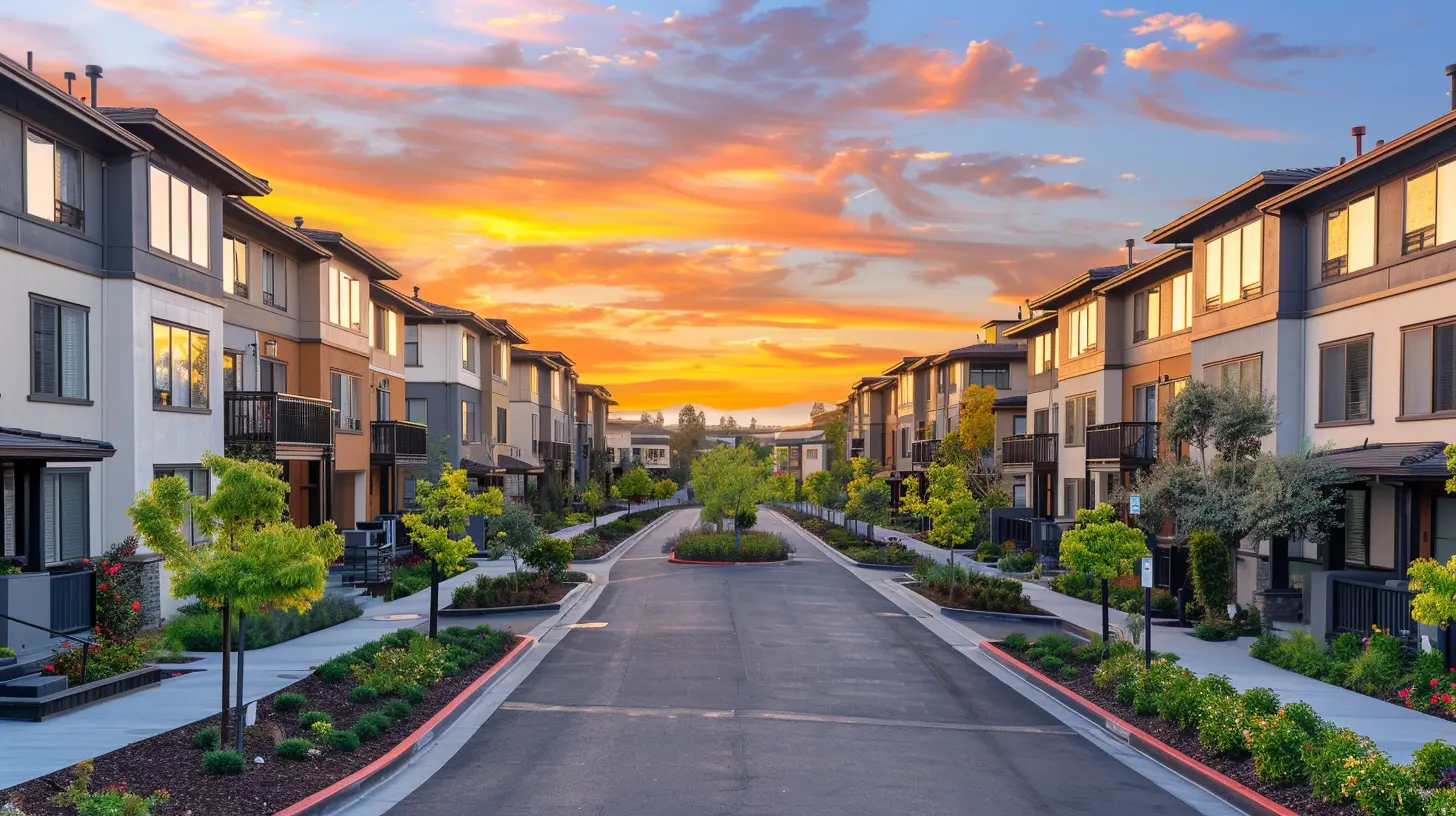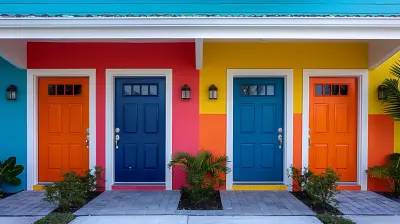Why Multifamily Properties Outperform Single-Family Homes in Rental Markets
6 July 2025
If you're looking to invest in rental properties, you're probably weighing the pros and cons of multifamily properties versus single-family homes. While single-family homes have their charm, multifamily properties tend to outperform them in rental markets. But why is that?
Let’s break it down and see why multifamily properties often come out on top when it comes to rental income, stability, and long-term profitability.

1. Higher Rental Income Potential
One of the biggest advantages of multifamily properties is their ability to generate more rental income. A single-family home gives you just one stream of rental income, while a multifamily property—whether it’s a duplex, triplex, or apartment building—offers multiple sources of revenue.Why is this important?
Because having multiple tenants reduces the risk of income loss. If a tenant moves out of a single-family home, you lose 100% of your rental income until a new tenant moves in. But in a multifamily property, even if one or two units go vacant, you still have income from the occupied units.
Simply put, more units = more income = greater financial stability.

2. Lower Vacancy Risks
Vacancies are every landlord’s nightmare. An empty unit means lost income, and with a single-family home, you're entirely dependent on keeping that one tenant. When the tenant leaves, the rental cash flow stops immediately.With multifamily properties, vacancies are much less of a financial burden. Even if one unit is unoccupied, the income from the remaining tenants helps cover mortgage payments, property maintenance, and other expenses. This built-in safety net makes multifamily properties a more secure investment.

3. More Efficient Property Management
Managing a single-family home may seem easier, but when you have multiple of them scattered across different locations, maintenance and management become more complex. Multifamily properties, on the other hand, allow you to keep everything in one place, making operations much smoother.Here’s how multifamily properties simplify management:
- You can hire a property manager to handle multiple units at once, often at a lower cost per unit.- Maintenance and repairs can be done in bulk, reducing overall expenses.
- Tenant communications and lease agreements are centralized, making organization easier.
Think of it like grocery shopping—would you rather make multiple trips to different stores or buy everything in one place? Managing a multifamily property is like shopping at a superstore—it saves time, effort, and money.

4. Economies of Scale
When you own a multifamily property, you benefit from economies of scale. That means the cost per unit for maintenance, repairs, and management is lower compared to single-family homes.For example, let’s say you need a new roof. In a single-family home, you bear the entire cost. However, if your multifamily property has 10 units, that roofing cost is spread across each unit, significantly reducing the financial impact on each rental.
Bulk discounts also apply when performing renovations, landscaping, or hiring contractors. These cost savings add up over time, making multifamily investments more profitable.
5. Easier Financing Options
Many investors assume financing a multifamily property is harder than a single-family home, but that’s not always true. In fact, lenders often see multifamily properties as less risky because they generate multiple income streams.Banks and mortgage lenders prefer investments with steady cash flow, and multifamily properties fit the bill. Some advantages include:
- Better loan terms – Lower interest rates and longer repayment periods.
- Higher loan amounts – Banks recognize the income potential and are more willing to lend larger amounts.
- More lender options – Investors can access traditional loans, FHA loans, or even commercial financing based on the property size.
If you've ever struggled to get financing for a single-family rental, shifting to multifamily properties might open new doors.
6. Stronger Long-Term Appreciation
While single-family homes do appreciate in value, multifamily properties have an edge because their value is largely based on rental income, not just market conditions.Here’s why this matters:
- If rental demand rises, property values go up—even if the surrounding market is flat.
- Investors can force appreciation by improving units, increasing rent, and managing expenses.
- Unlike single-family homes, which rely on comparable sales, multifamily properties are valued based on net operating income (NOI), giving investors more control over appreciation.
In short, with the right management and value-boosting strategies, a multifamily property can appreciate steadily over time, creating substantial wealth.
7. Stronger Demand in Urban Areas
Urbanization trends favor multifamily properties over single-family homes. As more people move into cities, the demand for affordable rentals increases. Multifamily units provide an attractive housing option for renters who want affordability and convenience.Additionally, Millennials and Gen Z—who make up a significant portion of today’s rental market—tend to prefer apartments and multifamily units due to their lower financial commitment compared to homeownership.
For investors, this translates into strong occupancy rates, steady rental demand, and long-term profitability.
8. Diversification of Rental Portfolio
If you've ever heard the phrase “don’t put all your eggs in one basket”, that applies to real estate investing too. A single-family rental property means you’re relying on one tenant for your income, which is a risky position to be in.Multifamily properties allow you to diversify your risk. Instead of depending on a single tenant, you spread your income across multiple renters, making cash flow more stable.
Think of it like investing in a mutual fund versus buying a single stock. A multifamily property is like a diversified fund—it balances risk and reward for better long-term results.
9. Tax Benefits and Write-Offs
Multifamily properties also come with bigger tax advantages. Investors can benefit from:- Depreciation write-offs – Spread out property depreciation to lower taxable income.
- Mortgage interest deductions – Offset loan interest against rental profits.
- Operating expense deductions – Write off property management fees, repairs, and utilities.
These tax write-offs can significantly reduce the amount of taxes you owe, increasing your net rental income.
10. Easier Scaling for Investors
If you’re serious about growing a real estate portfolio, multifamily properties offer a much faster way to scale. Instead of acquiring 10 single-family homes with 10 separate loans, you can purchase one 10-unit multifamily property under a single loan.This makes scaling up your real estate business simpler and more efficient. It’s why many successful real estate investors prefer multifamily properties—they provide faster growth with reduced complexity.
Conclusion: Multifamily Wins the Rental Market Battle
While single-family homes offer certain advantages, when it comes to rental market performance, multifamily properties undeniably take the lead. They provide higher rental income, lower vacancy risk, better scalability, and stronger long-term appreciation.If you’re an aspiring or seasoned real estate investor, shifting your focus to multifamily properties could be the key to building wealth, reducing risk, and maximizing cash flow.
So, if you're deciding between a single-family home or a multifamily property for your next investment, you might want to think bigger—because bigger, in this case, is often better.
all images in this post were generated using AI tools
Category:
Multifamily PropertiesAuthor:

Vincent Clayton
Discussion
rate this article
1 comments
Meagan Dorsey
Multifamily properties are the rising stars of rental markets, catering to diverse needs while maximizing returns. With shared amenities and lower vacancy rates, they attract a steady stream of tenants. In a world where community matters, it's clear: multifamily investments are the smarter choice for savvy real estate investors.
July 11, 2025 at 8:54 PM

Vincent Clayton
Thank you for your insightful comment! Multifamily properties indeed offer unique advantages that align with evolving tenant preferences and provide strong investment returns.


